Rob Stallard led a walk around Bucklebury Common on the morning of Wednesday 22 February, starting from the Cottage Inn at Upper Bucklebury. At the start of the walk, the weather was grey and damp, but by the end, the first sunshine was breaking through the clouds. Rob described the geology of the Common – river gravels overlying London Clay, with an iron-rich impermeable layer above the Clay. The main road across the Common is famous for its avenues of oak trees, one planted to commemorate the visit of Queen Elizabeth I and one for the Battle of Waterloo. The route led left out of the pub car park, then northwards across 3 meadows which are being managed for wildlife. An information board said that green hay from a nearby SSSI meadow had been spread here to increase the floral diversity. A hay crop is taken off each year and the meadow is then grazed. The walk continued along a track down through woodland dominated by oak and Holly and then along a lane to Sadgrove Farm. Primroses, Barren Strawberry and a single Lesser Celandine were in flower on the banks of the lane. The next section of the walk was eastwards along the northern boundary of the Common, with occasional views northwards across the valley of the Pang. There was a line of Beech trees, a Raven called and new Bluebell leaves poked up through the leaf litter. An old boundary bank ran along the edge of the Common, with a ditch on the inside, indicating that the bank and ditch were there to prevent animals from leaving the Common. Guided by a book of walks by Dick Greenaway, the hunt was on for veteran oak trees. Some were close to the path. Others were found by searching deep in the woodland. One of the target trees, the Coronation Oak, is believed to be 650 years old and is a Sessile Oak rather than the much commoner Pedunculate Oak. Apparently there had been a mass picnic around it to celebrate the coronation of Edward VII in 1902. A suitably large specimen was found. A massive branch had broken off on one side and was now covered by Hairy Curtain-crust fungi, which were a rich dark orange with a paler orange border. Close inspection of the illustration in Dick Greenaway’s book indicated that perhaps the wrong tree was being considered. Further on, a massive fallen oak appeared to have the right features, so perhaps the Coronation Oak is no longer standing. A veteran Holly tree was discovered in this area which had been coppiced long ago and may be 400 years old. A series of steep gulleys cut into the Clay, with streams draining northwards towards the Pang. Opposite-leaved Golden-saxifrage and Brooklime were found on the banks of one of these streams. Scaly Male Ferns were seen nearby that had been nearly completely eaten by deer. A dam had been constructed across another stream to form the lower boundary of a medieval fish pond which would have supplied fish for the monks of Reading Abbey. There was also another fish pond just to the south. Below the track on the other side of the dam was a marshy pool with orange water and an oily film – typical of iron-rich water. The song of a Song Thrush could be heard ahead. The track climbed upwards towards the top of the Common and the woodland became dominated by Silver Birch with Wood Sage and Bilberries. The walk continued across the main road over the Common and into a large open area where the birch had been felled and the ground scraped clear of vegetation. Heather was regenerating across the open area, together with some Gorse and many small birch and pine saplings. On one side of the track was a bank of scraped material, where the leaves of Sheep’s Sorrel could be seen, together with many plants of Climbing Corydalis, an uncommon plant in Berkshire, a few of which had tiny pale yellow flowers. Rob pointed out several small oak saplings which carried clusters of Oak Marble Galls. All three types of heather were seen – Cross-leaved Heath, Bell Heather and Heather, and the lichen Cladonia portentosa was widespread. After crossing the open area, the route led along a track which ran westwards through woodland along the southern boundary of the Common. There was more Climbing Corydalis, plus some small conifers with bright green, soft needles which were thought to be one of the American hemlocks. Once again, the boundary was marked by a bank with a ditch on the inside. Two oaks growing close together had fused, then separated again higher up. A small moth fluttered across the path and hid under a leaf. Closer inspection showed that it was a male Spring Usher (the female is flightless). The last of the morning’s veteran oaks was found on the boundary bank. A path led into the field beyond, which had been donated to the local community. There were patches of Broom at the edge of the field and the leaves of Sheep’s Sorrel could be seen in the acid grassland. The sun came out briefly on the final stretch of road back to the pub, where most of the group stayed for lunch.
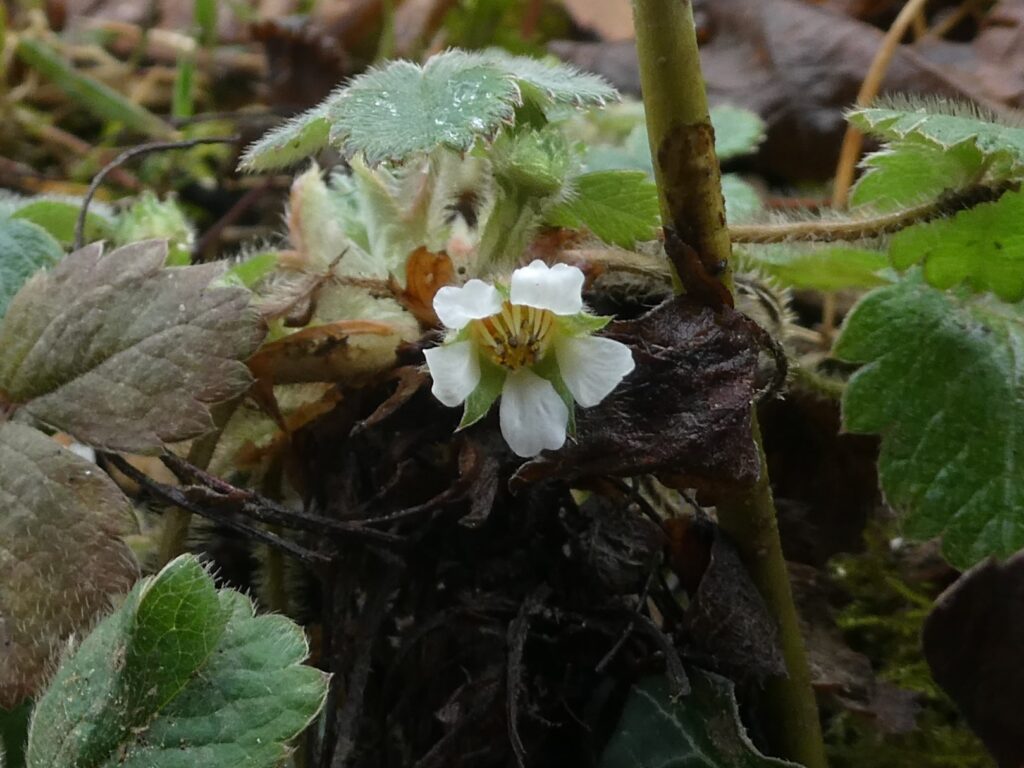
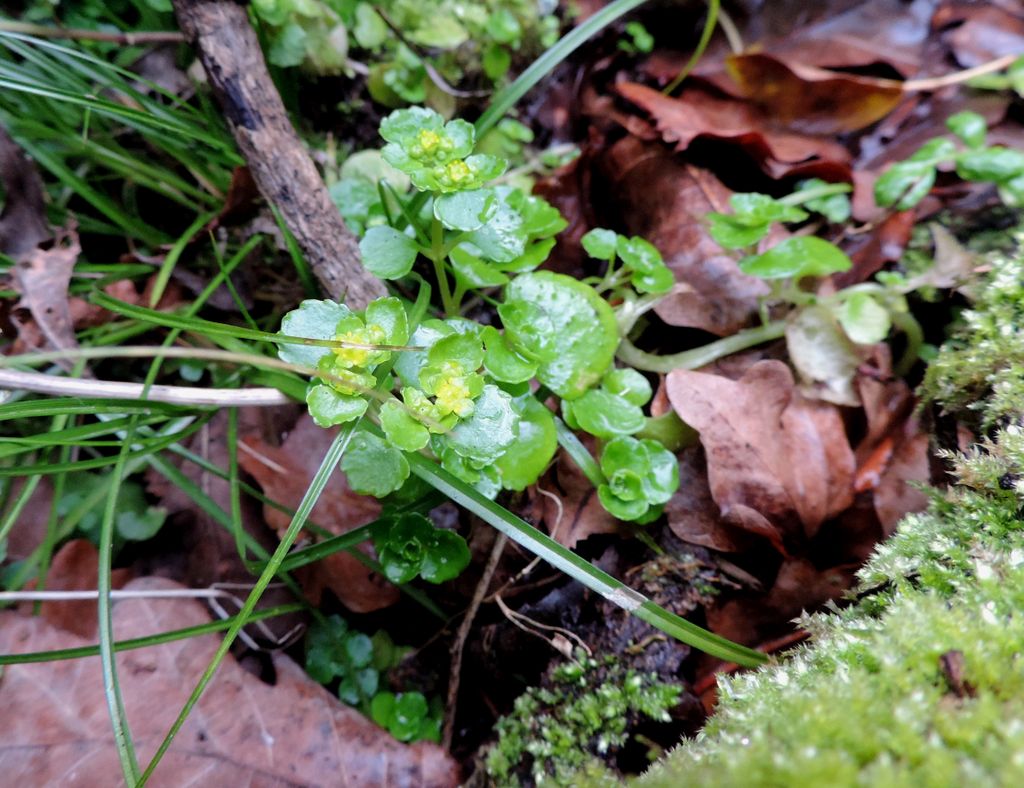
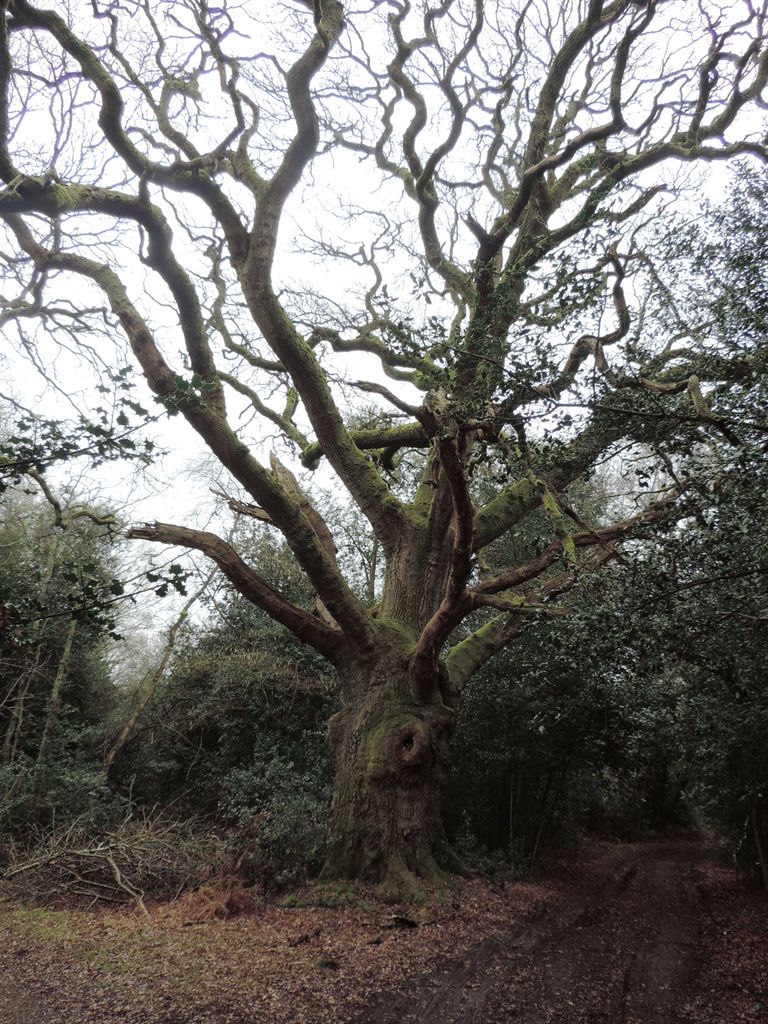
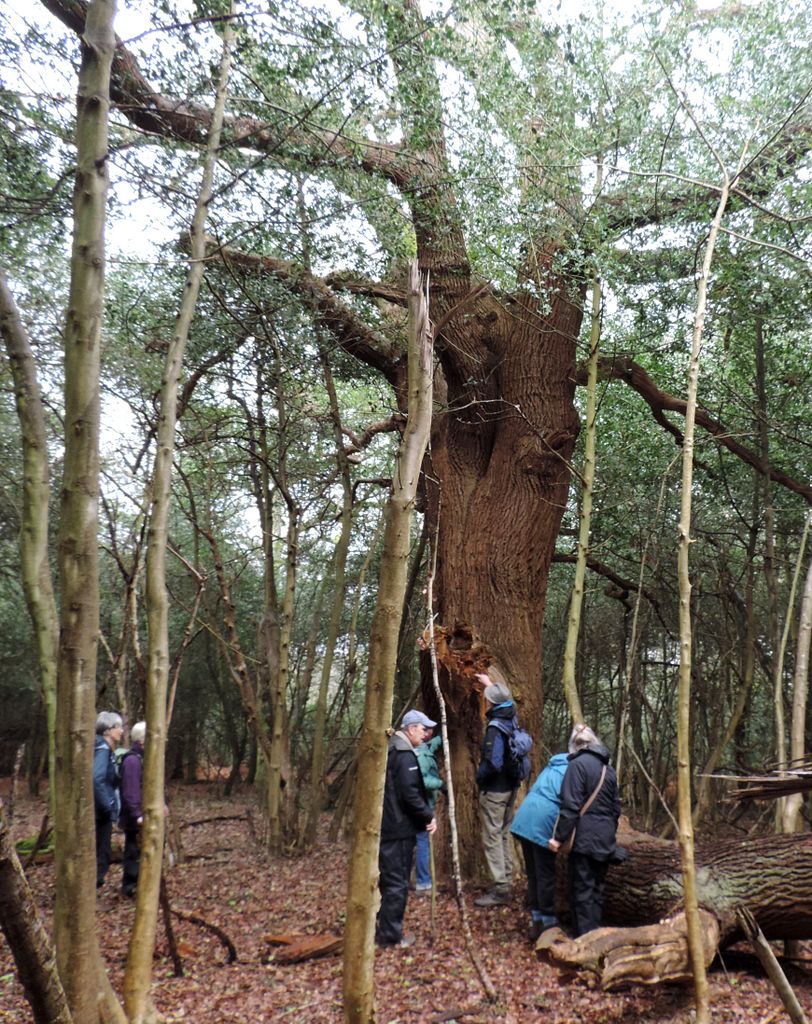
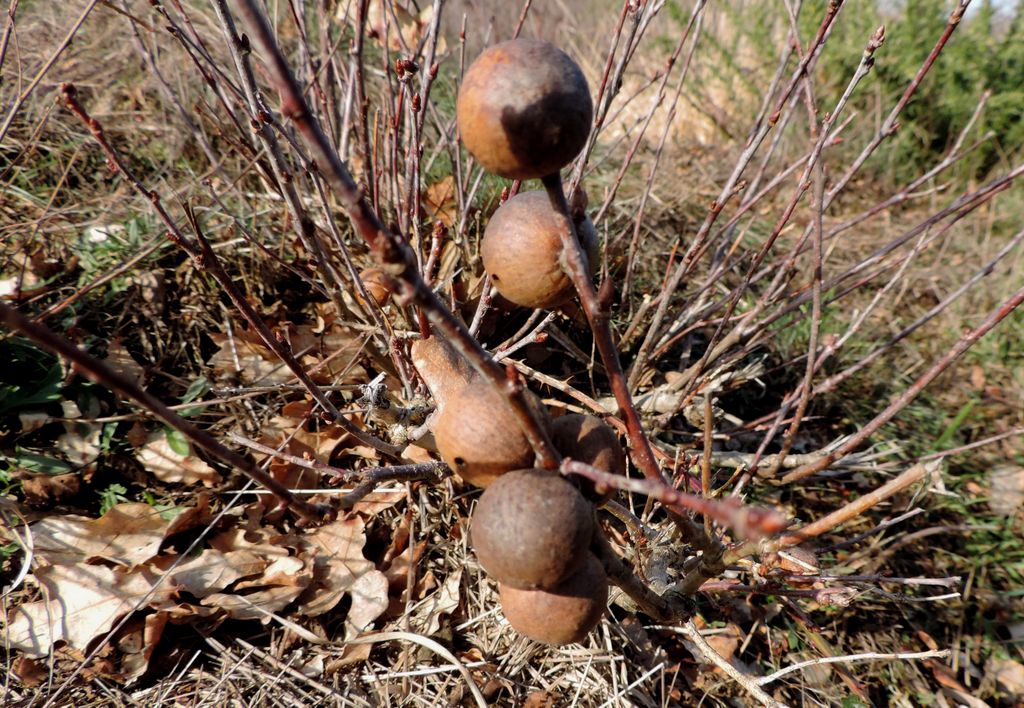
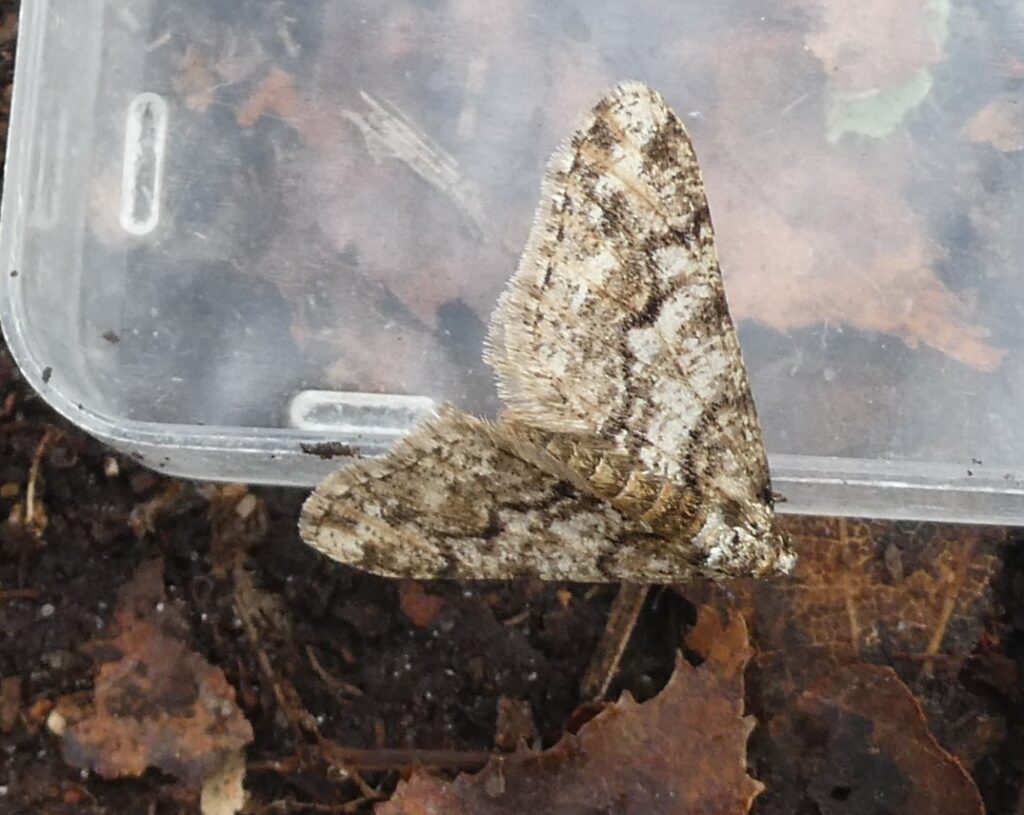
Pictures by Rob Stallard and Jim Wills
